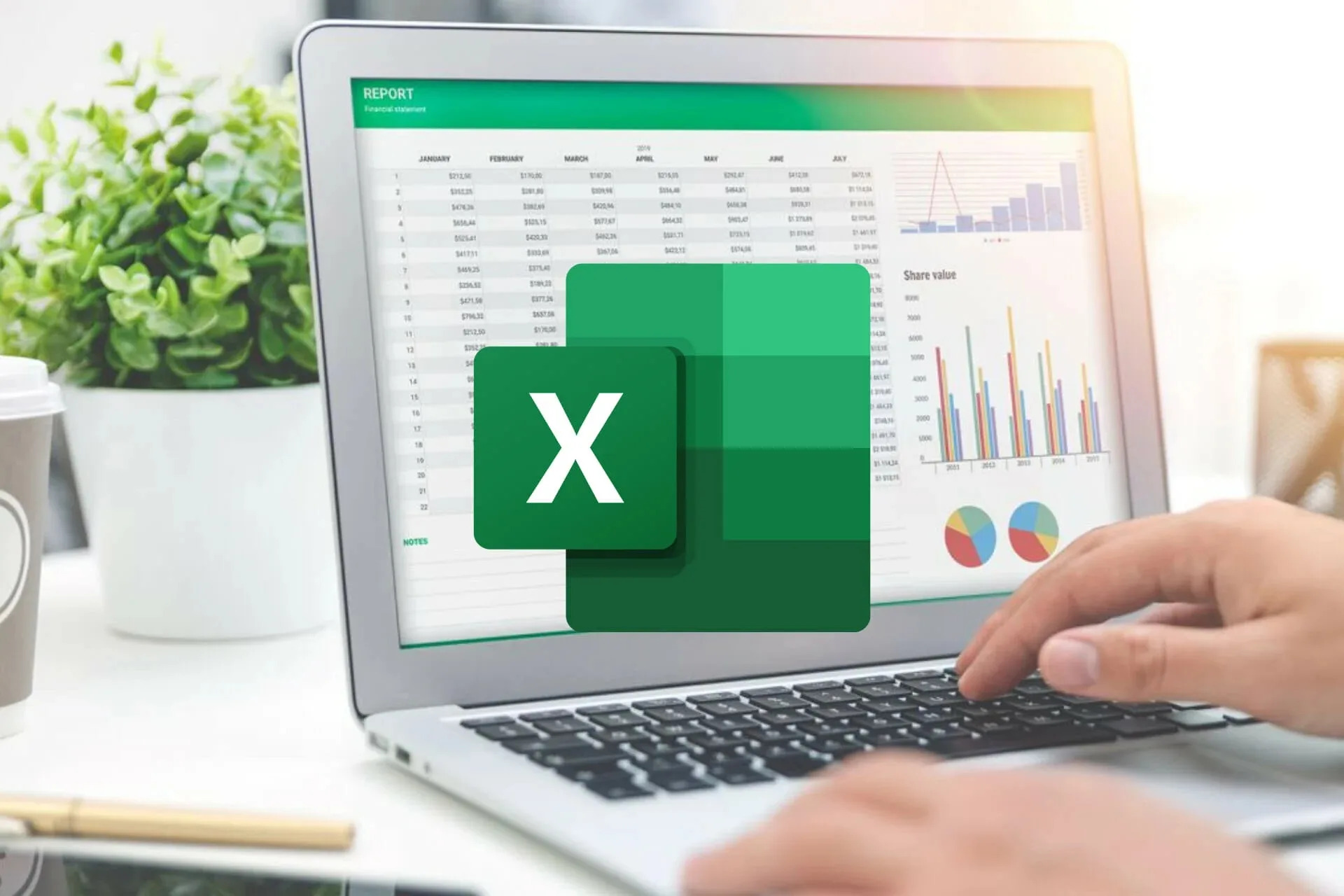Introduction
Welcome to the world of finance and data analysis! Yahoo Finance is a popular platform that provides valuable financial and market information. If you are looking to track and analyze stock or cryptocurrency data, Yahoo Finance is a fantastic resource.
Excel, on the other hand, is a powerful tool widely used for organizing and analyzing data. By combining Yahoo Finance with Excel, you can perform in-depth data analysis, create interactive visualizations, and make well-informed investment decisions.
In this article, we will guide you through the process of downloading Yahoo Finance data into Excel. You will learn how to access the historical data of stocks or cryptocurrencies and import it into Excel for further analysis.
By the end of this guide, you will have the skills to:
- Access Yahoo Finance and select the stock or cryptocurrency you want to track.
- Customize the historical data to suit your analysis requirements.
- Download the data as a CSV file for easy importing into Excel.
- Import the downloaded data into Excel and leverage its powerful features for analysis.
Whether you are a seasoned investor, financial analyst, or simply someone interested in exploring the world of finance, learning how to download Yahoo Finance data into Excel will expand your capabilities and give you a competitive edge.
So, let’s get started with this step-by-step guide and unlock the power of Yahoo Finance and Excel for your data analysis needs!
Step 1: Accessing Yahoo Finance
The first step is to access the Yahoo Finance website. Open your preferred web browser and navigate to finance.yahoo.com. Once you are on the Yahoo Finance homepage, you will find a wealth of financial information at your fingertips.
Take a few moments to explore the various tabs and sections on the Yahoo Finance website. You will notice that Yahoo Finance covers a wide range of financial markets, including stocks, cryptocurrencies, and more. This makes it a versatile platform for tracking and analyzing different types of assets.
For the purpose of this guide, we will focus on stock and cryptocurrency data. To proceed, click on the “Markets” tab located at the top of the Yahoo Finance homepage. This will take you to the market overview page where you can find information about different stock exchanges and indices.
If you are specifically interested in tracking cryptocurrency data, you can click on the “Cryptocurrencies” tab to access the relevant information. This section provides real-time data, charts, and news related to various cryptocurrencies.
Now that you have successfully accessed Yahoo Finance, you are ready to move on to the next step. In the following steps, we will guide you through the process of selecting the stock or cryptocurrency you want to track and accessing its historical data.
Stay tuned for Step 2!
Step 2: Select the Stock or Cryptocurrency to Track
Now that you have accessed Yahoo Finance, it’s time to select the specific stock or cryptocurrency that you want to track. Yahoo Finance offers a vast database of stocks and cryptocurrencies, making it easy to find the one you are interested in.
To get started, use the search bar at the top of the page and enter the name or ticker symbol of the stock or cryptocurrency you want to track. As you type, Yahoo Finance will provide suggestions to help you find the right asset quickly.
For example, if you want to track the stock of Apple Inc., you can enter “AAPL” or “Apple” in the search bar. Similarly, if you are interested in monitoring Bitcoin, type “BTC” or “Bitcoin” in the search bar.
Once you have entered the asset’s name or ticker symbol in the search bar, click on the appropriate result that appears in the dropdown list. This will take you to the asset’s overview page, where you can find detailed information and analysis of the stock or cryptocurrency.
On the asset’s overview page, you will find a wealth of information, including the current price, market performance, key statistics, news articles, and more. Take some time to explore these sections to get familiar with the asset’s performance and other relevant details.
Yahoo Finance also provides interactive charts that allow you to track the historical performance of the asset over different time frames. You can customize the charts by selecting different time intervals (such as daily, weekly, or monthly) and adding technical indicators to gain deeper insights.
By selecting the stock or cryptocurrency you want to track, you have completed the second step in the process. In the next step, we will guide you through accessing the historical data for your selected asset.
Stay tuned for Step 3!
Step 3: Accessing the Historical Data
Now that you have selected the stock or cryptocurrency you want to track on Yahoo Finance, it’s time to access its historical data. Historical data allows you to analyze the past performance of an asset and identify patterns and trends that can help in making informed investment decisions.
To access the historical data, navigate to the asset’s overview page. You can do this by clicking on the asset’s name or ticker symbol in the search results. Once you are on the asset’s page, look for the “Historical Data” tab, usually located near the top of the page.
Clicking on the “Historical Data” tab will take you to a page displaying a table of historical prices and other related information. You will find columns for the date, open, high, low, close, adjusted close, and volume.
By default, Yahoo Finance displays the historical data for the past few months. However, you can customize the time range to suit your analysis needs. Look for options to change the “Time Period” or “Date Range” on the page.
Yahoo Finance provides several time range options, including 1 day, 5 days, 1 month, 3 months, 1 year, 5 years, and more. Select the time range that is most relevant to your analysis. If you need data for a specific longer timeframe, such as 10 years, you might need to explore advanced options or consider using external tools or software.
Once you have specified the desired time range, the historical data table will automatically update to display the corresponding data points. Take your time to review and analyze the data provided in the table. You can also scroll down the page to view additional charts, including candlestick charts and volume charts.
Remember that historical data is valuable for understanding an asset’s past performance, but it does not guarantee future results. Use the historical data as a basis for analysis and consider incorporating it into a comprehensive investment strategy.
Now that you have successfully accessed the historical data for your selected asset, you are ready to move on to the next step. We will guide you through customizing the historical data in Step 4.
Stay tuned!
Step 4: Customizing the Historical Data
Once you have accessed the historical data for your selected stock or cryptocurrency on Yahoo Finance, you may want to customize the data to suit your specific analysis needs. Yahoo Finance provides various options to customize and refine the historical data view.
Here are a few ways you can customize the historical data:
- Change the Frequency: By default, Yahoo Finance displays daily data. However, you can change the frequency to view the data on a weekly or monthly basis. Look for options such as “Frequency” or “Interval” on the historical data page to modify the view.
- Add Technical Indicators: Yahoo Finance offers a range of technical indicators that can help you analyze the historical data more effectively. Look for options like “Indicators” or “Overlay” on the historical data page to add indicators such as moving averages, MACD, RSI, and more.
- Adjust for Dividends and Splits: Some stocks may have undergone dividend payouts or stock splits, which can affect the historical data. Yahoo Finance allows you to adjust the data to account for these events. Look for options like “Adjust for Dividends” or “Adjust for Splits” on the historical data page.
- Download Additional Data Points: Yahoo Finance provides a wide range of data points beyond the basic OHLC (Open, High, Low, Close) and volume. You can download additional data points such as adjusted close, dividend amount, split coefficient, and more. Look for options like “Download Data” or “Data Download” on the historical data page.
Take your time to explore these customization options and choose the ones that best fit your analysis requirements. Remember that customizing the historical data allows you to view the data from different perspectives and can provide valuable insights for your analysis.
After customizing the historical data to your desired view, you can proceed to the next step where we will guide you through downloading the data as a CSV file.
Stay tuned!
Step 5: Downloading the Data as a CSV file
After customizing the historical data for your selected stock or cryptocurrency on Yahoo Finance, you may want to download the data so that you can import it into Excel or any other data analysis software. Yahoo Finance allows you to download the historical data as a CSV (Comma-Separated Values) file.
To download the data, look for an option such as “Download” or “Export” on the historical data page. Clicking on this option will prompt you to choose the format in which you want to download the data. Select “CSV” as your preferred format.
Once you have selected the CSV format, Yahoo Finance will generate and prepare the file for download. A prompt will appear asking you to save the file to your computer. Choose a suitable location on your computer and save the file with a descriptive name such as “Stock_Historical_Data.csv” or “Cryptocurrency_Historical_Data.csv”.
Remember to save the file in a location that is easily accessible for future use. You can create a dedicated folder to store all your downloaded historical data files to keep them organized.
Downloading the data as a CSV file allows for seamless integration into various data analysis tools, including Excel. The CSV format is widely supported and enables easy manipulation and analysis of the data using spreadsheet software.
Once you have successfully downloaded the historical data as a CSV file, you are ready to move on to the final step: importing the data into Excel. This will allow you to leverage the powerful features of Excel for further analysis and visualization.
Stay tuned for the last step!
Step 6: Importing the Data into Excel
Now that you have downloaded the historical data of your selected stock or cryptocurrency as a CSV file from Yahoo Finance, it’s time to import the data into Excel. Excel provides powerful tools for data analysis, visualization, and further manipulation.
To import the data into Excel, open Microsoft Excel on your computer and create a new blank workbook. Once you have your blank workbook ready, follow these steps:
- Click on the “Data” tab at the top of the Excel window.
- Look for the “Get External Data” or “From Text” option and click on it. This will open a file explorer window.
- Navigate to the location where you saved the CSV file that you downloaded from Yahoo Finance.
- Select the CSV file and click on the “Import” or “Open” button. This will start the import process.
- In the “Text Import Wizard” window that appears, make sure the “Delimited” option is selected and click “Next”.
- On the next screen, choose the delimiter that was used in the CSV file. Typically, this is a comma. Make sure to preview the data on the right side of the window to ensure it is correctly aligned.
- Click “Next” and then “Finish”. This will import the data into Excel.
- By default, the imported data will be placed in a new sheet within the workbook. You can choose to import the data into an existing sheet by selecting the appropriate option in the “Import Data” dialog box.
Once the data is imported, you can start exploring and analyzing it using the various tools and functions in Excel. You can perform calculations, create visualizations, apply filters, and more to gain insights from the data.
Remember to save your Excel workbook with the imported data to ensure that you have a copy of your analysis. You can also create additional sheets within the workbook to organize your analysis and create charts and graphs for visual representation.
With the data successfully imported into Excel, you have completed the final step of downloading Yahoo Finance data and preparing it for analysis. Congratulations!
Use the power of Excel to dive deeper into the data, extract meaningful insights, and make informed financial decisions.
Conclusion
In this step-by-step guide, we have explored the process of downloading Yahoo Finance data into Excel for efficient analysis and decision-making. Starting from accessing Yahoo Finance to importing the data into Excel, we have covered all the essential steps to make the most of these powerful tools.
By leveraging Yahoo Finance’s extensive database of stocks and cryptocurrencies, you can track and analyze the performance of various assets. Customizing the historical data allows you to view the data from different perspectives, add technical indicators, and adjust for dividends and stock splits.
Downloading the historical data as a CSV file from Yahoo Finance enables seamless integration with Excel or other data analysis tools. Importing the data into Excel empowers you to perform in-depth analysis, create interactive visualizations, and make well-informed investment decisions.
With Excel’s versatile features and functions, you can apply various calculations, create charts and graphs, and explore trends and patterns within the data. Excel’s flexibility allows you to adapt the analysis to your specific requirements and gain valuable insights.
Remember, the combination of Yahoo Finance and Excel provides you with a powerful toolkit for financial analysis. Take the time to explore and experiment with different features offered by these platforms to uncover hidden opportunities and make data-driven decisions.
Now that you have learned how to download Yahoo Finance data into Excel, the possibilities for analyzing and interpreting financial data are endless. Keep yourself updated with the latest market trends, revisit and refresh your data regularly, and continuously refine your analysis skills to stay ahead in the dynamic world of finance.
Take the knowledge and skills you have gained from this guide and apply them to enhance your investment strategies, optimize your portfolio, and unlock new opportunities for financial success.
Happy analyzing!

























